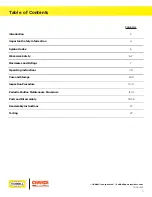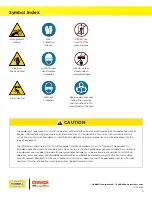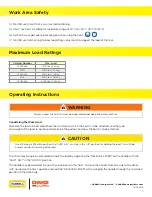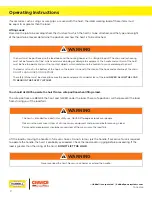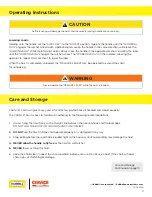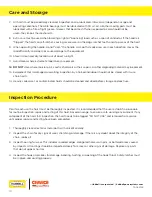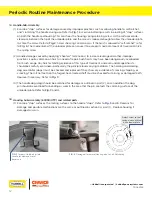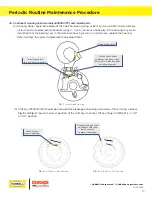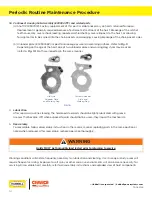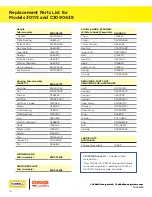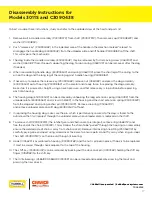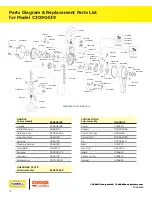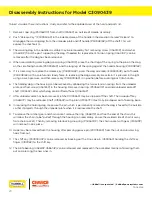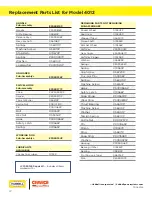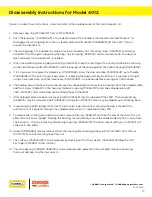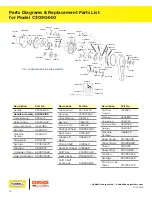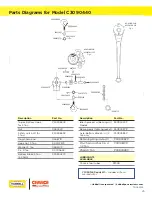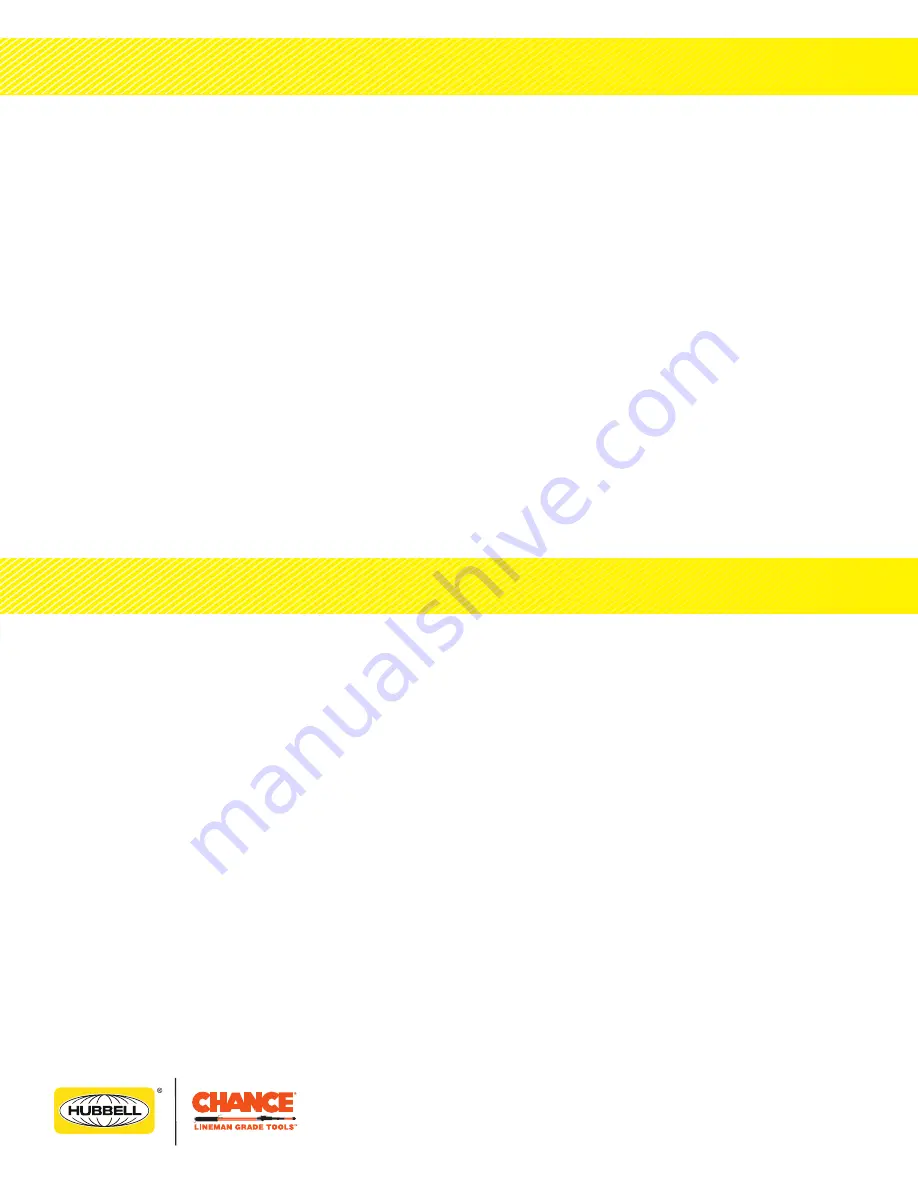
10
©Hubbell Incorporated | hubbellpowersystems.com
TD09232E
Care and Storage
7. All hoists must be periodically cleaned, inspected, and re-lubricated. Intervals will depend on usage and
operating conditions. The oilite bearings must be lubricated with 30 wt. oil. All other moving parts must be
lubricated with a film of light grease. Greases that become stiff when exposed to cold should not be
used—they impair the mechanism.
8. Extra care must be used when lowering a light or "bouncing" load such as a span of conductor. If the handle is
"flipped", the hoist can self-ratchet, causing severe wear on the dogs, ratchet teeth, and stop areas of the hoist.
9. When operating the handle, do not "slam" the handle. A smooth, steady pressure in each direction moves the
load efficiently and does not cause damage to the equipment.
10. Store in clean and dry location out of direct sunlight.
11. Avoid areas where extreme temperatures are present.
12. DO NOT
store where moisture, oil, caustic chemicals or their vapors, or other degrading material may be present.
13. Equipment that is damaged or awaiting inspection by a trained individual should not be stored with in-use
chain hoists.
14. Heavily soiled, wet, or contaminated hoists should be cleaned and dried before storage and each use.
Inspection Procedure
1. Thoroughly clean all exterior metal parts with solvent and dry.
2. Inspect the chain for any signs of wear, stretching, or damage. If there is any doubt about the integrity of the
chain, replace it.
3. Inspect housing for wear. This includes rounded edges, elongated holes, worn pins, or battered areas caused
by impacts. All castings should be inspected closely for cracks or other signs of damage. Replace any parts
that do not appear normal.
4. Inspect the hook assemblies for damage, bending, twisting, or opening of the hook throat. Safety latches must
be in place and working properly.
Prior to each use, the hoist must be thoroughly inspected. It is recommended that the user establish a procedure
for routine inspection, repair, and testing of this hoist, based on usage, to ensure a safe working environment. If any
component of the hoist fails inspection, the hoist needs to be tagged "DO NOT USE" and removed from service
until proper repairs and testing have been completed.



